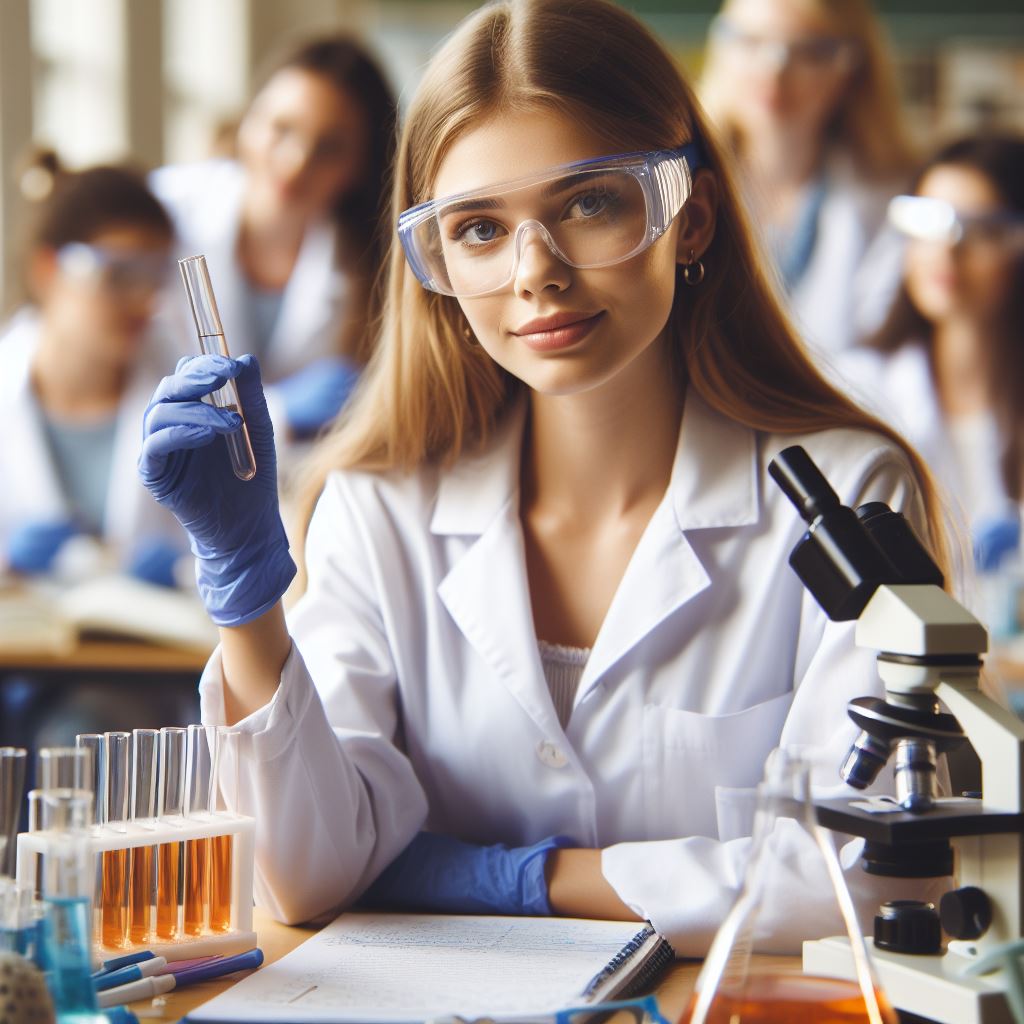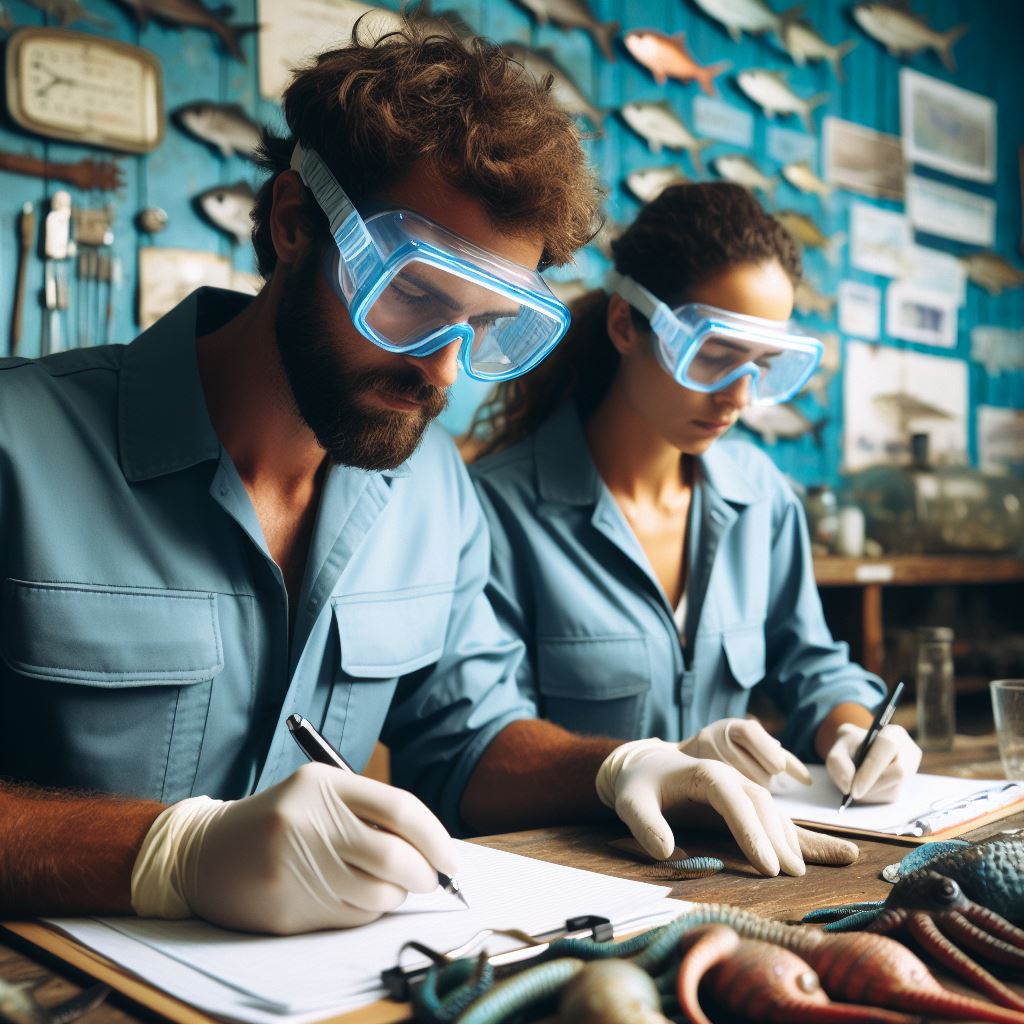Introduction
- The topic of Australian Women in Chemistry: Trailblazers is explored below.
- It is important to highlight Australian women in chemistry to recognize their contributions. Australian Women in Chemistry: Trailblazers
Chemistry is a field dominated by men, but Australian women have made significant breakthroughs and contributions. By shedding light on these women, we can inspire future generations and challenge gender stereotypes in the scientific community.
Edith Muriel Hogg was one of the first Australian women to earn a Bachelor of Science in Chemistry. She paved the way for future generations, proving that women could excel in this field.
Dorothy Hill revolutionized the field of geology by using chemistry to analyze rocks and minerals. Her work changed the way scientists understand the Earth’s history.
Elizabeth Blackburn’s discovery of telomeres and telomerase earned her a Nobel Prize in Chemistry and paved the way for advancements in understanding aging and cancer.
Kathleen Lonsdale was a pioneer in X-ray crystallography and made groundbreaking discoveries in the structure of organic compounds.
In addition to these individual achievements, Australian women have made significant contributions to the field of chemistry as a whole. Their work has led to advancements in medicine, agriculture, and environmental science.
Recognizing and highlighting the accomplishments of Australian women in chemistry is crucial for encouraging more diversity in the field.
By showcasing their success stories, we can inspire young girls to pursue careers in science and break down barriers that limit their opportunities.
In essence, Australian women in chemistry have made remarkable contributions that deserve recognition. By sharing their stories, we can empower future generations to follow in their footsteps and create a more inclusive scientific community.
Historical context
Pioneering women in Australian chemistry
- Martha Annie Maxwell, the first Australian female chemist, made significant contributions in agricultural chemistry.
- Early women chemists faced various challenges such as gender discrimination, limited educational opportunities, and societal biases.
Women have always played a crucial role in shaping the field of chemistry, and Australia is no exception. Despite facing numerous challenges, pioneering Australian women have trailblazed the path for generations to come.
Pioneering women in Australian chemistry
- Martha Annie Maxwell, the first Australian female chemist, made significant contributions in agricultural chemistry. Maxwell’s research and experiments revolutionized agricultural practices in Australia during the late 19th century.
Her findings led to more efficient land management techniques, improving crop yields and overall agricultural productivity in the country. - Early women chemists in Australia faced immense challenges. During a time when higher education for women was limited, access to quality education in the field of chemistry was even more restricted.
Many women had to fight against societal expectations and stereotypes to pursue their passion for science. They had to overcome gender discrimination, lack of support, and limited opportunities for professional development.
Despite these obstacles, these early women chemists persevered and left a lasting impact on the scientific community. Their achievements and contributions continue to inspire and pave the way for future generations of Australian women in chemistry.
“Maxwell’s Pioneering Contributions to Agricultural Science and Overcoming Gender Biases in Chemistry”
Maxwell’s groundbreaking work in agricultural chemistry laid the foundation for advancements that continue to benefit Australia’s agricultural sector.
Her research focused on soil analysis, plant nutrition, and the development of innovative fertilizers.
By understanding the chemical makeup of soils and its impact on crop growth, Maxwell helped improve agricultural practices, leading to increased yields and boosted food production.
The challenges faced by early women chemists were not limited to educational barriers. They also had to combat deeply ingrained societal biases that questioned their abilities and suitability for scientific pursuits.
Many faced prejudice and skepticism from their male counterparts, who viewed chemistry as a field reserved for men. Despite these hardships, these trailblazing women persevered, defying social norms and proving their competence in the field.
“Pioneering Australian Women in Chemistry: Trailblazers, Advocates, and Inspirations”
These early women chemists created networks of support and mentorship, establishing organizations and societies to champion women’s involvement in science.
They pushed for policy changes and advocated for equal opportunities, paving the way for future generations of women to pursue careers in chemistry.
The contributions and resilience of these pioneering Australian women in chemistry cannot be overstated. They have left a lasting impact on the field, challenging societal norms and expanding the boundaries of scientific knowledge.
Today, Australian women continue to contribute significantly to the world of chemistry, building upon the foundation laid by these trailblazers.
Their achievements serve as a reminder that gender should never be a barrier to pursuing one’s passion and making meaningful contributions in any field.
These women in chemistry continue to inspire and empower future generations, encouraging them to break through barriers and reach for the stars.
Your Personalized Career Strategy
Unlock your potential with tailored career consulting. Get clear, actionable steps designed for your success. Start now!
Get StartedRead: Balancing Lab Work and Life in Australia
Notable Australian women chemists
Dr. Elizabeth Blackburn
Dr. Elizabeth Blackburn is a renowned Australian biologist and Nobel laureate. She is best known for her discovery of telomerase, an enzyme that plays a vital role in aging and cancer.
Her breakthrough research on telomeres, the protective caps at the ends of chromosomes, revolutionized the field of molecular biology. It led to a better understanding of cellular aging and the development of potential treatments for age-related diseases.
Professor Michelle Simmons
Professor Michelle Simmons is an esteemed physicist and pioneer in quantum computing. Her groundbreaking work focuses on the development of atomic-scale devices for the future of computing technology.
Under her leadership, a team at the University of New South Wales successfully created the world’s smallest transistor using a single atom.
This breakthrough has significant implications for advancing the field of quantum computing and pushing the limits of conventional silicon-based technologies.
Dr. Marita Cheng
Dr. Marita Cheng is an inspiring roboticist and entrepreneur. She is recognized for her efforts in using robotics to enhance the lives of people with disabilities, particularly the elderly and those with mobility challenges.
One of her notable inventions, the Robogals program, encourages young women to pursue careers in engineering and technology.
She also co-founded Aipoly, an artificial intelligence company that develops innovative solutions for the visually impaired.
Dr. Margaret Brimble
Dr. Margaret Brimble is a distinguished chemist and professor known for her expertise in synthetic organic chemistry. She has made significant contributions to the development of new drugs for the treatment of cancers and infectious diseases.
One of her noteworthy achievements includes the synthesis of a complex natural product called amphidinolide H, which possesses potent anti-cancer properties.
Her groundbreaking research has paved the way for the discovery of novel therapeutics.
Professor Veena Sahajwalla
Professor Veena Sahajwalla is a highly regarded materials scientist and engineer. Her pioneering work focuses on sustainable materials and process engineering, with an emphasis on recycling and upcycling waste materials.
She invented the revolutionary “green steel” technology, which utilizes waste plastics and rubber tires in the production of steel. This breakthrough reduces environmental pollution and carbon emissions while improving the efficiency of steel manufacturing.
Professor Emily Hilder
Professor Emily Hilder is an accomplished analytical chemist and researcher. Her work has revolutionized the field of separation science and contributed to the development of advanced analytical techniques.
One of her remarkable achievements includes the development of a microchip-based separation method for pharmaceutical analysis.
This innovation has improved the efficiency and sensitivity of drug testing, benefiting both the pharmaceutical industry and public health.
Dr. Jenny Martin
Dr. Jenny Martin is a respected biochemist and structural biologist. Her research focuses on understanding the structures and functions of proteins involved in infectious diseases, with the aim of developing targeted therapies.
Stand Out with a Resume That Gets Results
Your career is worth more than a generic template. Let us craft a resume and cover letter that showcase your unique strengths and help you secure that dream job.
Get HiredShe made notable contributions to the field through determining the atomic structure of key proteins in malaria parasites. This knowledge has opened up possibilities for the design of novel anti-malarial drugs and the development of effective vaccines.
These remarkable Australian women chemists have not only made groundbreaking discoveries and advancements in their respective fields, but they have also inspired future generations of scientists, particularly women, to pursue careers in chemistry and other scientific disciplines.
Read: Navigating Chem Grad Studies in Australia
Challenges and Barriers Faced by Australian Women in Chemistry
Gender Biases and Stereotypes
- Australian women in chemistry often face gender biases and stereotypes that hinder their career progression.
- They are often subjected to the commonly held belief that men are more suited for leadership roles in the field.
- These biases and stereotypes can limit women’s opportunities for advancement and undermine their confidence.
Lack of Representation in Leadership Positions
- Another major challenge for Australian women in chemistry is the lack of representation in leadership positions.
- Despite their skills and qualifications, women are often overlooked for top roles in academic institutions and industry.
- This lack of representation can perpetuate the gender biases and stereotypes mentioned earlier.
Work-Life Balance Issues
- Balancing career and personal life is a significant challenge faced by Australian women in chemistry.
- The demanding nature of the field often requires long hours and extensive commitments, making work-life balance difficult.
- This challenge is particularly pronounced for women who also want to start a family and face the pressures of childcare.
Despite these challenges and barriers, Australian women in chemistry have made significant strides…
- Gender biases and stereotypes hinder women’s career progression in chemistry.
- Lack of representation in leadership positions limits opportunities for women in the field.
- Work-life balance becomes a challenge for women who want to pursue a career in chemistry.
HTML tags: N/A
Learn More: Day in the Life of Aussie Marine Biologists
Explore Further: Enviro Science Careers in Australia: A Guide
Initiatives and programs promoting women in chemistry
In order to promote and support the advancement of women in chemistry, there are several initiatives and programs available in Australia.
Organizations supporting Australian women in chemistry
- The Royal Australian Chemical Institute (RACI) has a Women in Chemistry group that aims to celebrate and promote the achievements of women in the field.
- The Association for Women in the Sciences (AWIS) is a non-profit organization that advocates for gender equality in STEM fields, including chemistry.
- The Science in Australia Gender Equity (SAGE) program works towards improving gender equity and diversity in the Australian scientific community, including chemistry.
Description of mentorship and networking programs
- The RACI offers mentoring programs for early career and established women in chemistry, providing guidance and support throughout their careers.
- The AWIS provides networking opportunities through regional and national events, connecting women chemists with peers and professionals in the field.
- Many universities and research institutions have their own mentorship programs, pairing female chemistry students and professionals with experienced mentors.
Events and conferences dedicated to women in chemistry
- The RACI organizes the Women in Chemistry Symposium, a one-day event that showcases the work of women chemists and provides a platform for networking.
- The AWIS hosts an annual conference that features presentations and discussions on various topics related to women in chemistry and STEM fields.
- The International Union of Pure and Applied Chemistry (IUPAC) holds conferences focused on women in chemistry, encouraging collaboration and sharing of research.
These initiatives, organizations, and events play a crucial role in empowering and advancing women in the field of chemistry in Australia.
By highlighting the achievements of women in chemistry, providing mentorship and networking opportunities, and organizing dedicated conferences, they contribute to the growth and success of female chemists in the country.
Read: Innovative Chemistry Startups in Australia

See Related Content: Steps to Become a Biologist in Australia
Future outlook and opportunities
Progress made in promoting gender equality in chemistry
Increased awareness and initiatives have helped to bridge the gender gap in chemistry.
Mentoring programs provide guidance and support for women pursuing careers in chemistry.
Organizations have implemented policies to promote equitable opportunities for women in research and leadership roles.
Women in chemistry are gaining recognition for their contributions and breaking barriers in the field.
Efforts to close the gender pay gap have led to fairer compensation for women in chemistry.
Potential for increased representation and advancement of Australian women in chemistry
Continued efforts can lead to a greater representation of women in chemistry at all levels.
Creating a supportive environment will enable women to advance and thrive in the field.
Diversifying leadership positions will provide opportunities for women to have a voice in decision-making.
Engaging in collaborations and networking will enhance career prospects for Australian women in chemistry.
Investing in the education and training of women in chemistry will yield long-term benefits.
Importance of inspiring future generations
Showcasing the achievements of Australian women in chemistry will inspire young girls to pursue careers in this field. Scholarships and grants can encourage more women to enter the field of chemistry.
Providing mentorship and guidance to young women will help them navigate the challenges they may face.
Expanding outreach programs will create awareness and generate interest in chemistry among young girls.
Encouraging a culture of inclusivity will empower future generations of Australian women in chemistry.
Read: Must-Attend Chemistry Conferences in Aus
Transform Your LinkedIn for Maximum Impact
Elevate your professional brand with a LinkedIn profile that attracts recruiters, showcases your expertise, and maximizes opportunities. Stand out in your industry with a profile built for success.
Boost ProfileDiscover More: Breaking Into Research: AU Edition
Uncover the Details: Chemistry Job Market Outlook in Australia
Conclusion
Australian Women in Chemistry: Trailblazers Redefining Science
Australian women in chemistry stand as pioneers, forging paths and redefining the scientific narrative. Breaking through societal norms, they’ve not only contributed to the field but have fundamentally transformed it.
- Trailblazing Achievements: These women, through resilience and determination, have shattered glass ceilings, their contributions echoing in laboratories and lecture halls across the nation.
- Reshaping Scientific Landscape: Their impact extends beyond individual achievements; they have collectively reshaped the landscape of Australian chemistry, challenging the status quo and broadening perspectives.
- Inspiring Future Generations: As trailblazers, their legacy lives on in the inspiration they provide. Future generations of Australian female in chemistry are encouraged to pursue their passions unapologetically.
Continuing Support and Recognition: A Call to Action
- Embrace Recognition: Acknowledging their contributions is not just a gesture but a crucial step in building an inclusive scientific community.
- Support Future Endeavors: The call is not just to recognize the past but to actively support and encourage the present and future contributions of Australian women in chemistry.
- Brighter, Inclusive Scientific Future: By rallying behind these trailblazers, we collectively contribute to a brighter, more inclusive scientific future, where gender is never a barrier to making impactful contributions.
In closing, the significance of Australian women in chemistry cannot be overstated. As we reflect on their achievements, let us pledge to continue supporting and recognizing their invaluable contributions.
The torch they lit illuminates the way for aspiring scientists, ensuring that the legacy of these trailblazers remains vibrant and enduring.




